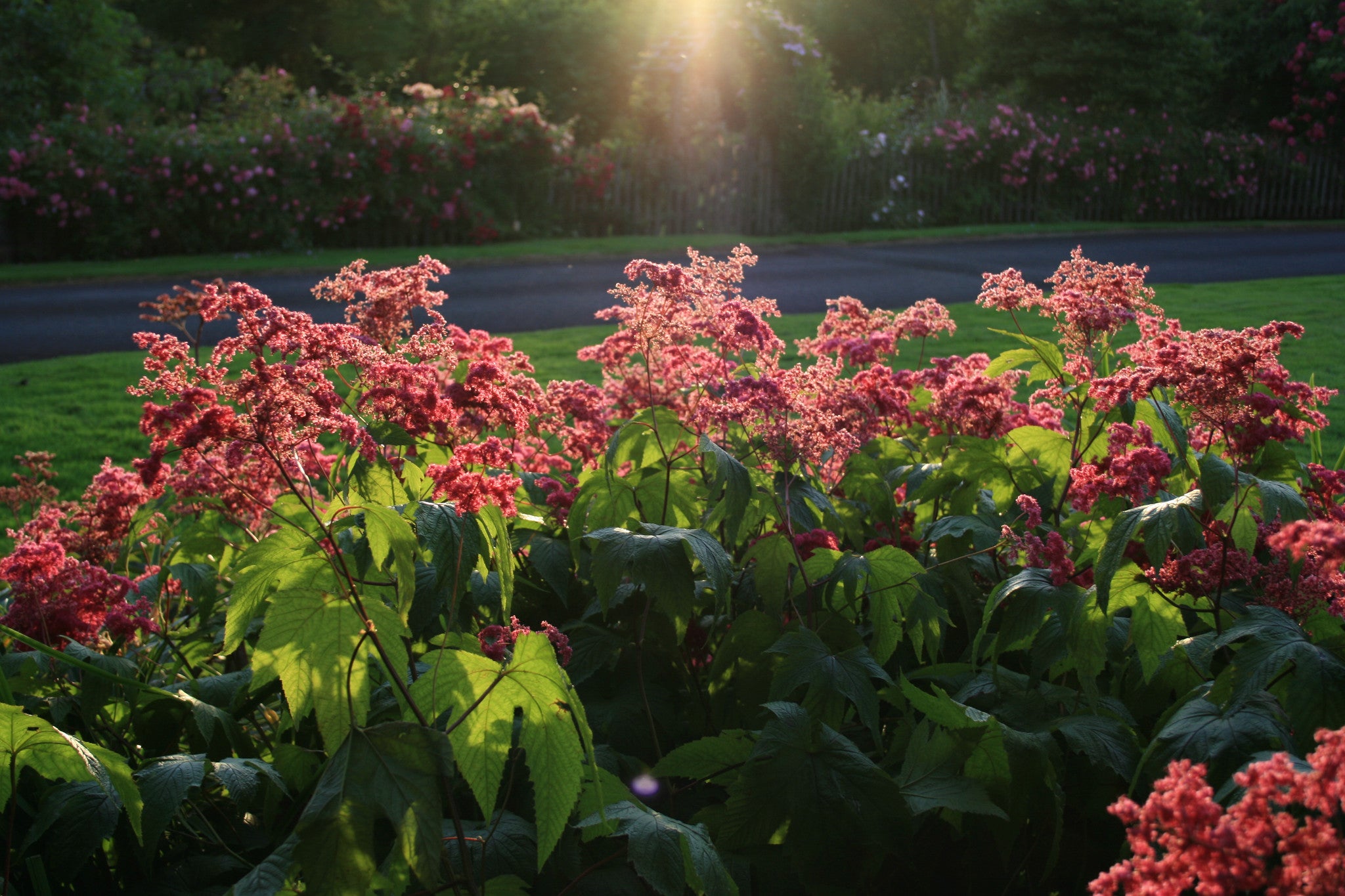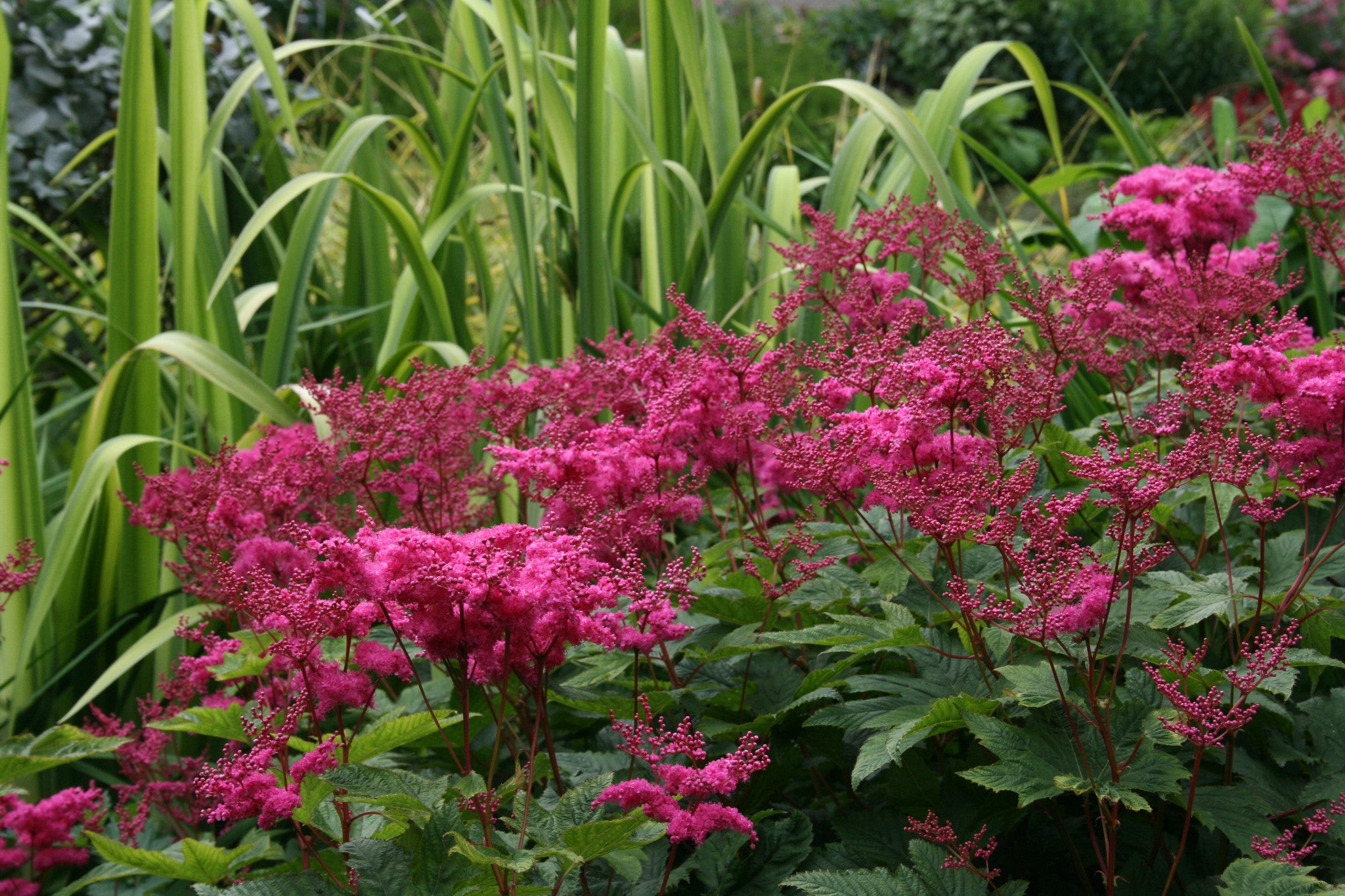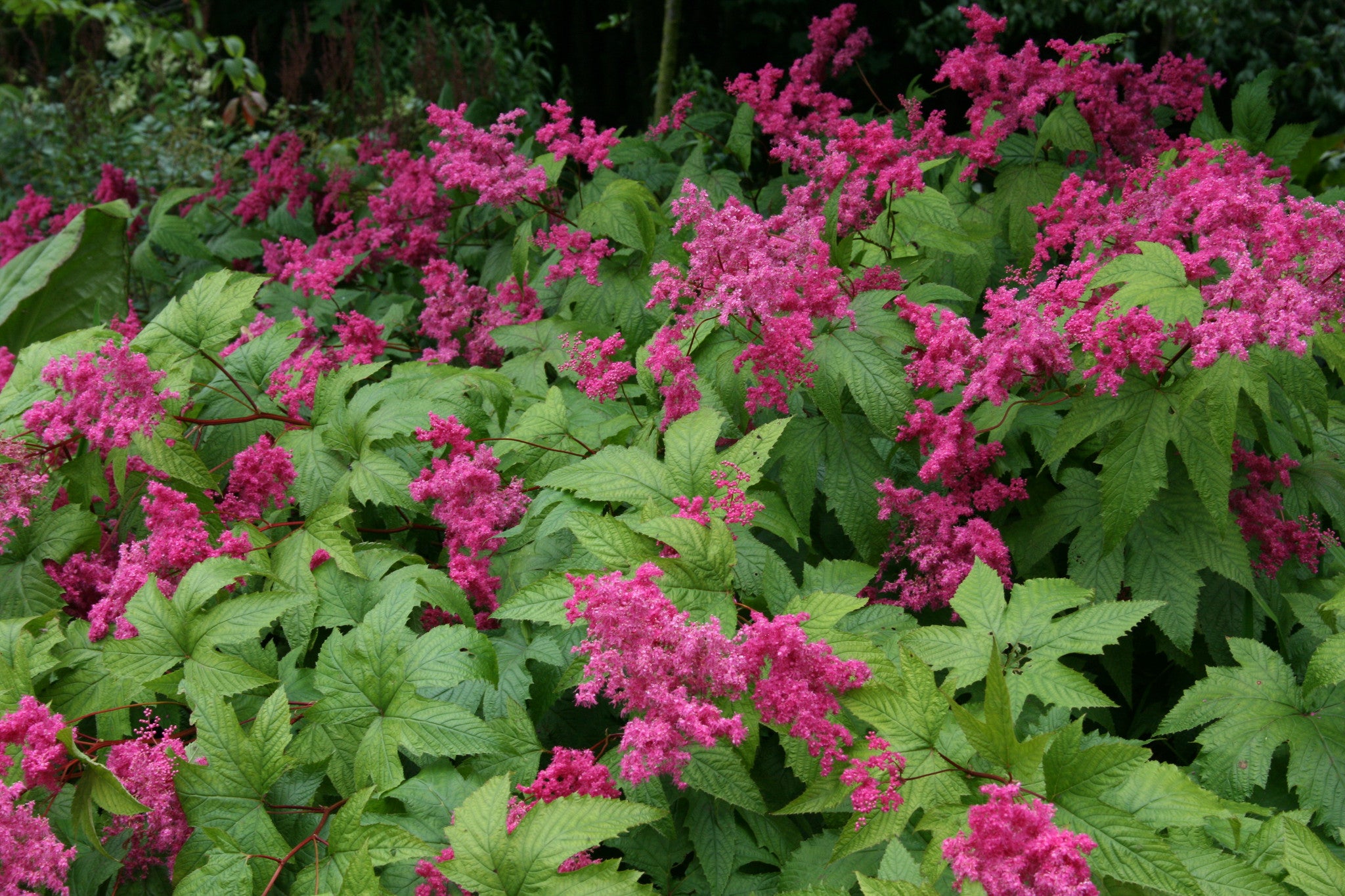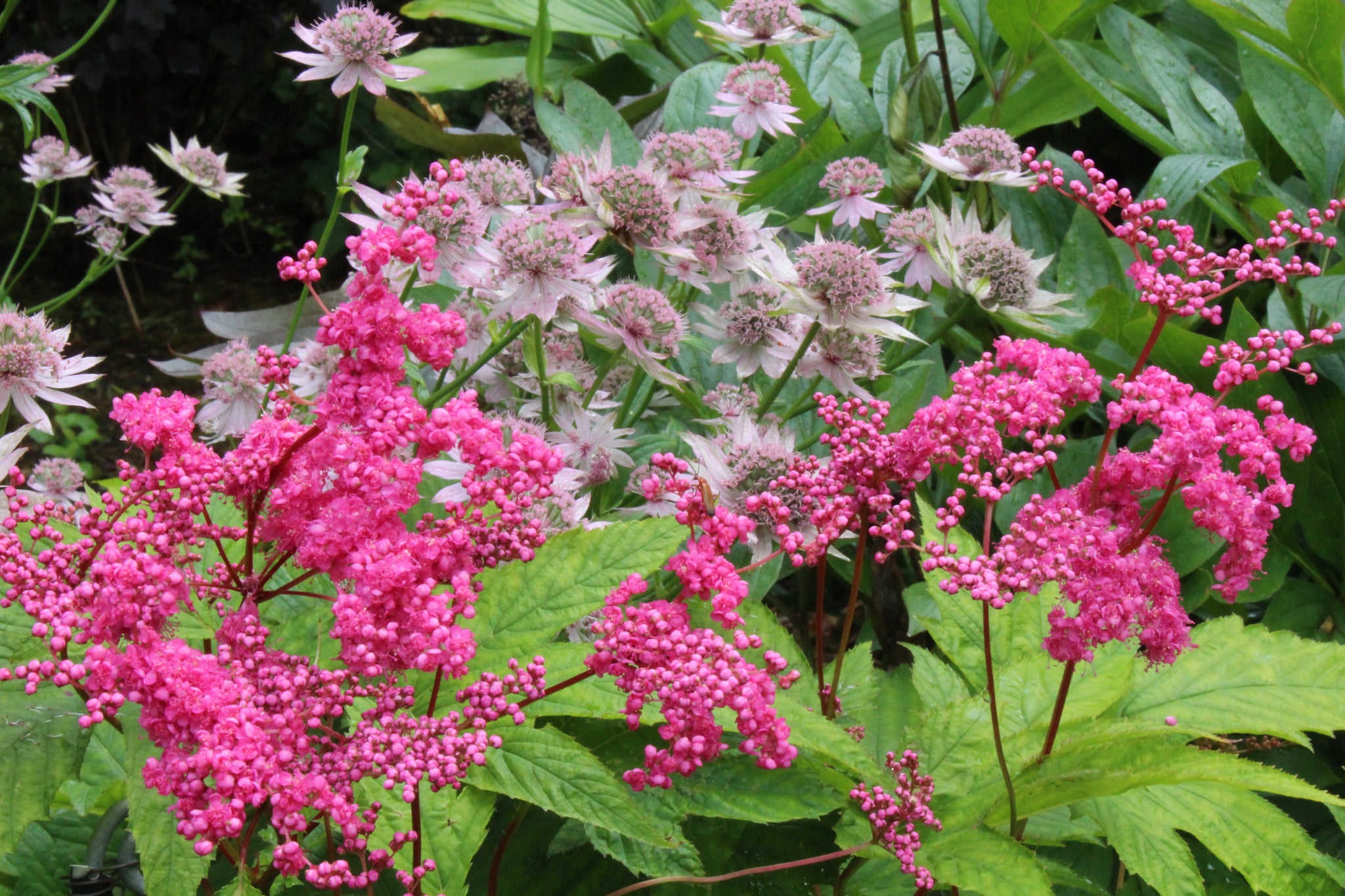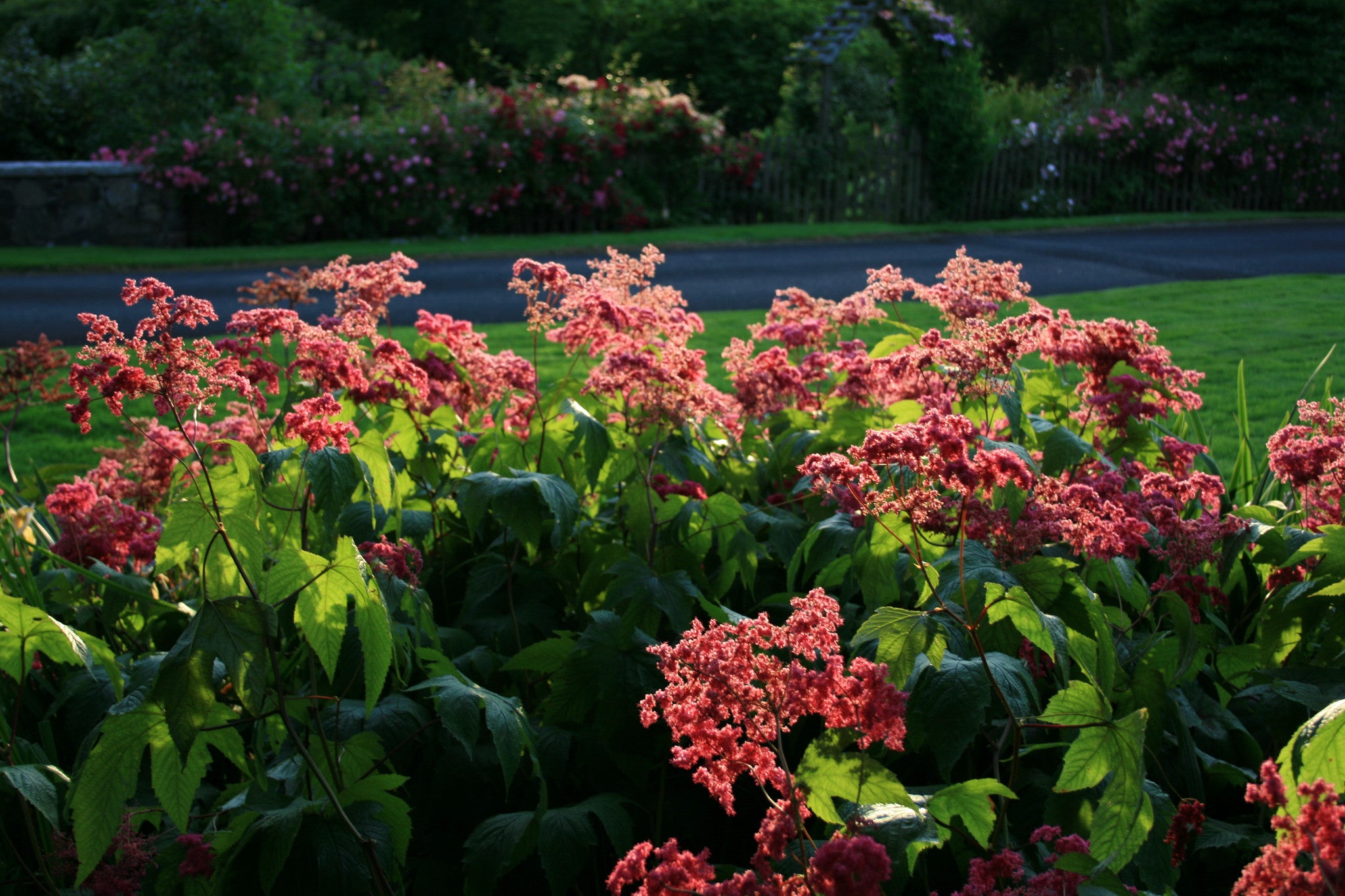Filipendula palmata 'Rubra'
Approx. 0.5 litre pot
About this cultivar:
Filipendula palmata 'Rubra' produces blooms that are tiny and pink above its ferny, pointy leaves. At Ballyrobert we love this one - looks great in low sun and does well in a wet space. The specific epithet means 'embroidered with palm branches'
- Position: Full sun, partial shade
- Soil: Almost any soil, grows well in Ballyrobert
- Flowers: June, July, August
- Other features: Grows well in Ballyrobert
- Hardiness: Fully hardy - grows well in Ballyrobert!
- Habit: Clump forming, bushy
- Foliage: Deciduous
- Height: 60 - 90 cm (2 - 3 ft)
- Spread: 60 - 90 cm (2 - 3 ft)
- Time to full growth: 2 to 5 years
- Plant type: Herbaceous Perennial
- Colour: Green, pink
- Goes well with: Try it with Iris, Hosta, Campanula, Matteuccia, Rosa, Gunnera, Euphorbia, or large Geraniums.
About this genus:
Filipendula is a genus of just 12 species in the rose family that are native to the Northern Hemisphere. The genus name comes from Latin filum (thread) and pendulus (hanging) in reference to root tubers that hang from the roots. In the past sometimes treated as the genus Spiraea, genetic research has shown that they are less closely related than previously considered - thank you science! At the time when the official name was Spiraea, the drug that was made from it became known as aspirin. The invented word combined the ''a'' from acetylic acid and the ''spir'' from Spiraea. We think you don't have to ingest this beautiful genus to feel better, just plant it in your garden!
This genus prefers moist conditions, almost any soils and full sun to part shade - it does great for us in our garden at Ballyrobert. The leaves may scorch during dry periods. This problem is easily fixed by giving your Filipendula a haircut when the drought is over and new growth will emerge fresh and pretty.
Filipendula can be used as a foliage plant with large, fragrant, maple-like leaves that are sometimes striped. Filipendula flowers are attractive, airy, fragrant clusters containing hundreds of tiny little flowers in shades of white, or pink that attract butterflies and insects. Reminiscent of wild cow parsley this plant can be useful when naturalizing a border. Filipendula looks spectacular when grown in drifts, at the back of a perennial border, in meadows, or along streams and ponds. Try it with Iris, Hosta, Campanula, Matteuccia, Rosa, Gunnera, Euphorbia, or large Geraniums.

